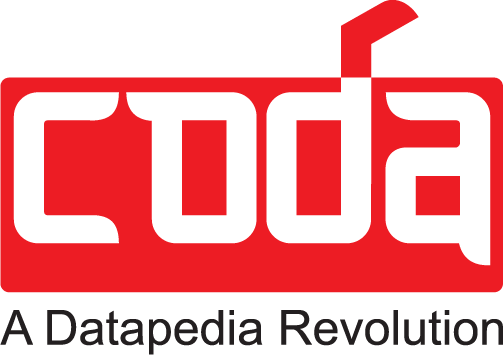Two foundational elements of any enterprise master data strategy are vendor code creation and customer code creation. These codes are not mere system entries but unique identifiers that enable seamless integration between procurement, finance, logistics, compliance, and customer service systems.
For industries as diverse as Oil & Gas, Manufacturing, Healthcare, EPC, and Real Estate, particularly across data-intensive geographies like India, the GCC, and the Far East, structured code creation ensures data accuracy, compliance, traceability, and process efficiency.
Understanding the Basics
Vendor Code Creation involves assigning a unique identifier to each supplier your organization works with. It ensures that purchasing, payments, contract management, and compliance checks are linked to the correct legal entity.
Customer Code Creation assigns unique identifiers to your clients, enabling order processing, credit management, invoicing, and CRM systems to operate without ambiguity.
Though both fall under master data management (MDM), the business case for each has distinct benefits.
The Strategic Value of Vendor and Customer Codes
Vendor and customer codes form the backbone of operational data. They are essential for managing relationships, streamlining processes, and delivering on key business outcomes.
| Key Objective | Vendor Code Creation | Customer Code Creation |
|---|---|---|
| Regulatory Compliance | Validates vendor identity, GST/VAT/KYC-compliant | Ensures accurate tax filings and invoice traceability |
| Operational Efficiency | Automates procure-to-pay workflows | Enables faster order-to-cash cycles |
| Risk Mitigation | Prevents onboarding of high-risk suppliers | Flags duplicate or risky customer accounts |
| Data Consistency | Eliminates duplicate vendors across BUs or regions | Unifies customer identities across platforms |
| Reporting & Analytics | Enables accurate spend tracking, supplier KPIs | Supports customer segmentation and revenue analysis |
Why Structured Code Creation Is Non-Negotiable
An unstructured or ad-hoc approach to vendor and customer code creation often leads to data redundancy, inconsistent records, and operational inefficiencies. Below are common business challenges stemming from weak code governance:
- Duplicate vendors causing overpayments
- Mismatched customer entries affecting invoicing and credit control
- Non-compliance with regulatory bodies due to incorrect or incomplete data
- Inaccurate reporting across regions or business units
- Incompatibility with ERP or automation systems
These risks are compounded in large-scale enterprises operating in multi-entity, multi-region, and multi-currency environments.
Facing duplicate vendor records and inconsistent customer data?
Take the first step toward data clarity and compliance.

Regional Considerations for Code Creation
India
In India, vendor and customer data must comply with Goods and Services Tax (GST) mandates. Errors in GSTIN or PAN can lead to denied tax credits and non-compliance risks. Additionally, suppliers and customers need to be classified correctly by industry codes for accurate reporting.
GCC (UAE, Saudi Arabia, Qatar, Oman, Kuwait, Bahrain)
In the GCC, VAT regulations and supplier classifications are enforced strictly. Public sector contracts often mandate standardized vendor onboarding protocols, including national registration and trade license validation.
Far East (China, Japan, Singapore, Vietnam, etc.)
In this region, organizations often deal with multi-lingual master data, varying legal naming conventions, and unique identifiers. For example, in Japan, both Kanji and Romaji entries are required, adding complexity to code governance.
Code Creation Best Practices from Leading Enterprises
Enterprises with mature data management practices approach code creation strategically. Here’s how:
1. Standardized Data Templates
Define mandatory and optional fields specific to regions and regulations. For vendors: bank details, tax numbers, registration proof. For customers: billing/shipping addresses, industry codes, credit limits.
2. Data Validation & Deduplication
Implement AI/ML-based tools to validate against government databases (e.g., GSTN, ROC) and detect duplicate entries across systems.
3. Governed Workflows
Automate code requests with role-based approvals involving procurement, compliance, and finance teams to reduce human error.
4. Centralized Data Ownership
Assign a master data team or steward responsible for maintaining and auditing data health.
5. ERP Integration
Ensure your MDM platform integrates with SAP, Oracle, Maximo, and other ERPs, so clean data flows across the enterprise in real time.
Case study: Before & After
Before Structured Code Creation:
- 25% duplicate vendor records
- Disparate supplier naming conventions
- Delayed payment cycles and audit flags
After Implementation:
- Unified vendor master across 12 entities
- 40% faster supplier onboarding
- 30% fewer invoice errors
- Reduced compliance risks by 60%
Frequently Asked Questions
Q1: Can the same party be both a vendor and a customer?
Yes. However, best practices suggest creating two separate entries with distinct codes to manage their roles independently.
Q2: How often should code audits be conducted?
We recommend quarterly audits and especially during major system migrations, ERP upgrades, or compliance cycles.
Q3: Can AI help in deduplicating old records?
Absolutely. Modern MDM tools use AI/ML to compare fields, phonetics, regional nuances, and validate against regulatory sources.
Q4: Is code creation relevant for small and mid-sized businesses?
Yes. Even smaller enterprises benefit significantly from data accuracy, especially when scaling or integrating systems.
Q5: What are the signs of poor code governance?
Invoice delays, compliance flags, data silos, and redundant workflows are common indicators of weak vendor or customer data practices.
Conclusion
Vendor and customer code creation is not just a backend IT task—it is a strategic enabler of clean data, process efficiency, and regulatory alignment. As more businesses digitize operations across borders, the need for accurate, governed master data has become non-negotiable.
By investing in structured code creation frameworks, supported by intelligent MDM tools and clear governance, organizations can unlock better decision-making, reduce operational risk, and drive long-term business value.

Ready to build a future-proof master data foundation?
Our AI-enabled MDM solutions are tailored for regional and industry-specific needs.


